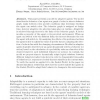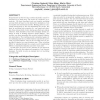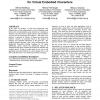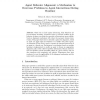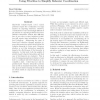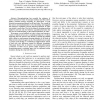AAMAS
2005
Springer
14 years 5 months ago
2005
Springer
This paper presents a model for adaptive agents. The model describes the behavior of an agent as a graph of roles, in short a behavior graph. Links between roles provide conditions...
IAT
2005
IEEE
14 years 5 months ago
2005
IEEE
Being able to trust in a system behavior is of prime importance, particularly within the context of critical applications as embedded or real-time systems. We want to ensure that ...
CSB
2005
IEEE
14 years 5 months ago
2005
IEEE
Studying the genetic control of molecular, anatomical and/or morphological phenotypes in model organisms is a powerful tool in the functional analysis of a gene. The goal of our r...
SCESM
2006
ACM
14 years 5 months ago
2006
ACM
Requirements models for large systems typically cannot be developed in a single step, but evolve in a sequence of iterations. We have developed such an iterative modeling process ...
PERSUASIVE
2007
Springer
14 years 5 months ago
2007
Springer
The success of many online services today depends on the company’s ability to persuade users to take specific actions, such as registering or inviting friends. We examined over 5...
ICMI
2007
Springer
14 years 5 months ago
2007
Springer
In this paper we introduce a system that automatically adds different types of non-verbal behavior to a given dialogue script between two virtual embodied agents. It allows us to ...
CIA
2007
Springer
14 years 5 months ago
2007
Springer
When two or more agents interacting, their behaviors are not necessarily matching. Automated ways to overcome con
icts in the behavior of agents can make the execution of interacti...
ATAL
2007
Springer
14 years 5 months ago
2007
Springer
Real-world behavior-based robot control problems require the coordination of a large number of competing behaviors. However, coordination becomes increasingly difficult as the num...
IROS
2007
IEEE
14 years 5 months ago
2007
IEEE
— We propose a novel approach for acquisition and development of behaviors through observation in multi-agent environment. Observed behaviors of others give fruitful hints for a ...
IROS
2007
IEEE
14 years 5 months ago
2007
IEEE
— Neurophysiology has revealed the existence of mirror neurons in brain of macaque monkeys and they shows similar activities during executing an observation of goal directed move...
